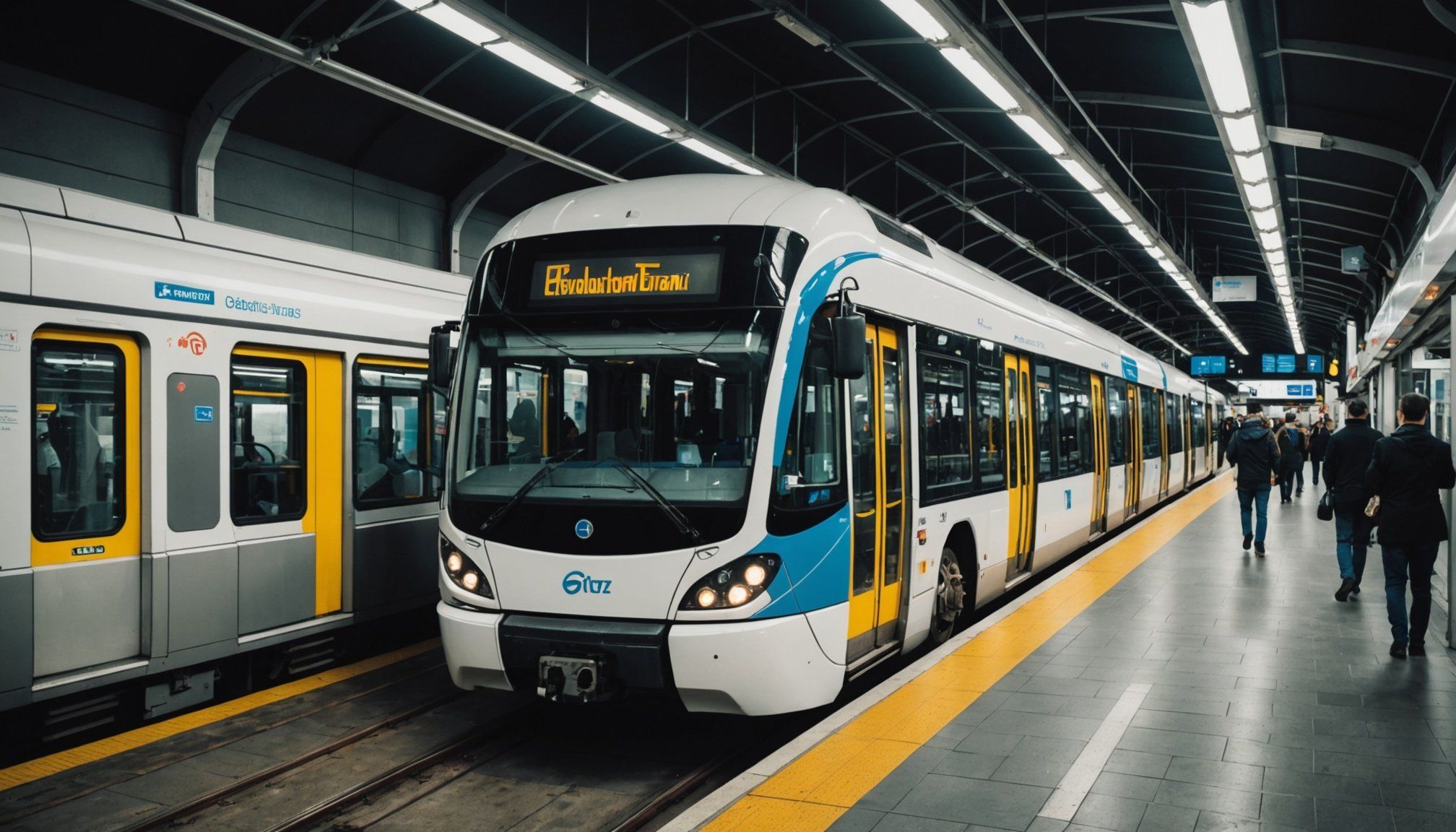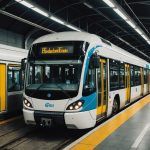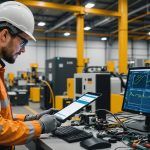Overview of AI in Predictive Maintenance for Public Transport
Predictive maintenance in public transportation is a proactive strategy that uses advanced technologies to anticipate potential failures before they occur, enhancing the efficiency of transit systems. AI applications in transit, specifically through machine learning and data analytics, are at the forefront of this innovation. These intelligent systems analyse vast amounts of operational data to forecast when components may need maintenance, minimizing disruptions.
Public transport innovation thrives on the integration of these AI technologies. Machine learning algorithms, for instance, identify patterns and predict failures by continuously learning from historical and real-time data. Data analytics further aids in transforming raw data into actionable insights, ensuring that maintenance is scheduled precisely when needed, reducing unnecessary maintenance checks and costs.
Have you seen this : Revolutionizing Sports Coaching: How Augmented Reality Elevates Real-Time Performance
Currently, the transit industry is witnessing a gradual yet impactful adoption of predictive maintenance technology. Many public transport systems are piloting small-scale AI solutions to validate efficiency before widespread implementation. As AI integration progresses, more transit agencies are recognizing its potential to revolutionize maintenance operations, highlighting its importance in public transport innovation. The ability to strategically incorporate AI-driven maintenance plans signifies a transformative step forward, ensuring reliability and cost efficiency in public transportation.
Case Studies of Successful AI Implementations
Exploring predictive maintenance case studies reveals the transformative potential of AI in public transportation. These successful AI transit examples showcase how innovation can enhance reliability and efficiency.
Also read : Revolutionizing Predictive Maintenance with Cutting-Edge AI for Eco-Friendly Energy Solutions
Case Study: City A’s Smart Maintenance System
City A implemented AI-driven predictive maintenance, achieving remarkable results. This system uses machine learning to anticipate component failures, optimizing maintenance schedules. Metrics indicate a significant drop in unexpected breakdowns, leading to cost savings and improved service reliability. Stakeholders praised the system’s ability to streamline operations, contributing to public transport innovation.
Case Study: City B’s Integrated AI Framework
City B’s integration of AI presented some initial challenges, such as adapting existing infrastructure to new technology. They developed customised solutions, enhancing implementation processes. After integrating AI, maintenance schedules became more efficient, reducing downtime and operational costs. This showcases the AI framework’s potential in transforming public transit.
Case Study: City C and IoT Integration
City C uniquely combined AI with IoT, creating synergy between technology and human oversight. This collaboration allowed real-time data collection, enhancing predictive maintenance’s accuracy. Lessons learned highlight the importance of stakeholder communication and alignment. The initiative underscored AI’s capability to drive future projects towards smarter, more adaptive public transit systems.
Benefits of AI-Driven Predictive Maintenance
Advancements in AI-driven predictive maintenance are ushering in an era of unprecedented advantages for public transport systems. Among the most notable benefits, cost efficiency stands out. By pre-emptively identifying potential failures, transit agencies can significantly reduce downtime, ensuring that transport services remain uninterrupted. This proactive approach eliminates unnecessary expenditures associated with emergency repairs and unscheduled maintenance.
Another crucial advantage is the enhanced efficiency achieved through precise maintenance scheduling. This ensures resources are allocated more effectively, improving overall operational efficiency. In practice, this means transit vehicles are more reliably in service, thus maintaining consistent schedules and enhancing customer satisfaction.
Furthermore, AI-driven maintenance contributes to improved safety measures. By leveraging data-driven insights, these systems enable continuous monitoring of vehicle components. This predictive capability ensures any potential safety issues are addressed before they pose risks, thereby safeguarding both passengers and transit staff.
Through these significant advantages, AI applications in transit are transforming public transport into a more cost-efficient, reliable, and safer mode of transportation. As the technology evolves, these benefits are likely to expand, further cementing AI’s role in the future of public transportation innovation.
Challenges in Implementing AI in Public Transport
Implementing AI in public transport faces several transit industry hurdles. A significant challenge is the reliability and quality of the data used for predictive maintenance. Inaccurate or incomplete data can lead to predictive maintenance issues, affecting decision-making processes. Ensuring data accuracy demands investment in better data collection and verification technologies, yet it’s a hurdle that many transit agencies struggle to overcome.
Resistance to change among staff and management also poses a critical barrier. Many employees are accustomed to traditional maintenance methods, and the shift to AI-driven strategies may cause apprehension about job security and changes in workflow. Overcoming this resistance requires comprehensive training programs and clear communication about the advantages of AI in transit, ensuring staff understands the technology’s benefits.
Further complicating AI integration are technical hurdles such as data integration and system interoperability. Transit agencies must reconcile traditional systems with cutting-edge technologies, which often involves significant infrastructure updates and potentially high costs.
Addressing these AI implementation challenges necessitates a strategic approach, combining technological upgrades with human-centric solutions. Building a cross-functional team to tackle these obstacles can foster a smoother transition, encouraging innovation while addressing concerns within the transit industry.
Future Trends in AI for Public Transport Maintenance
The landscape of public transport innovation is set to transform with emerging trends in AI transit applications. As the industry advances, technologies like advanced IoT and edge computing are expected to play pivotal roles in future predictive maintenance initiatives. These tools will enable real-time data processing closer to data sources, reducing latency and enhancing maintenance decision-making efficiency.
Innovations in public transportation also emphasise sustainability and efficiency. The integration of AI into predictive maintenance technologies can lead to more eco-friendly practices by minimizing waste through optimized resource usage. This aligns with increasing global demands for sustainable transportation solutions.
Looking forward, AI’s role in urban transport systems is predicted to expand significantly. Expect rising adoption of autonomous systems that leverage AI for smarter, more adaptive maintenance processes. Such systems aim to reduce human error, improve safety, and further drive down operational costs.
The trends are not limited to technology; there is an increasing focus on public transport innovation that addresses both societal needs and environmental concerns. As these trends continue, transit agencies must be proactive in embracing these future advances, ensuring they remain competitive and responsive to evolving passenger expectations.











